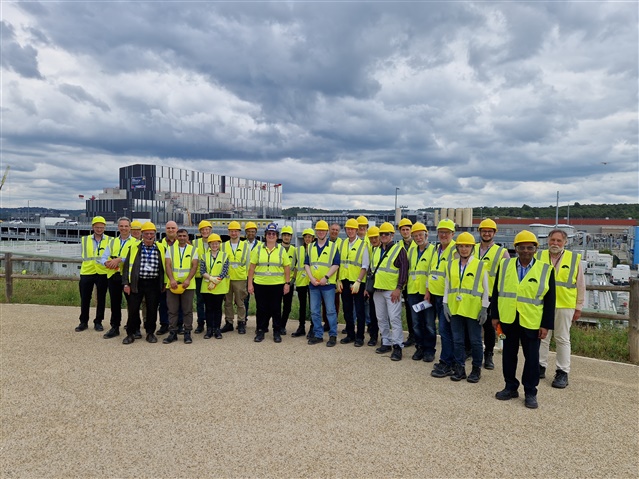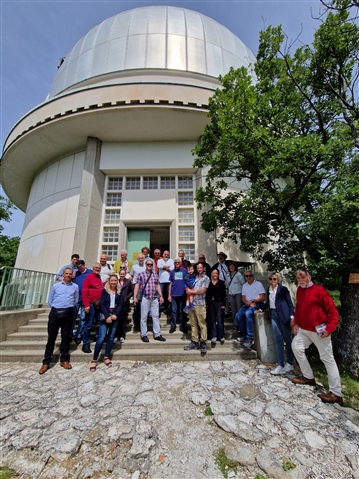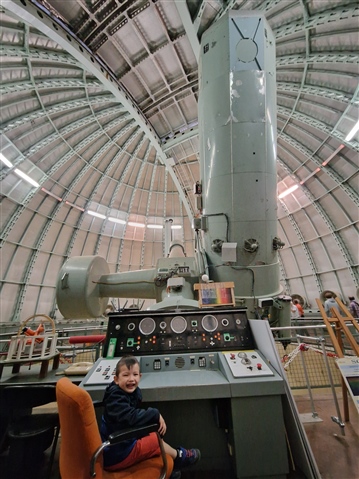The Institution of Engineering and Technology (IET) France Network in partnership with the Institute of Civil Engineers organized a visit to the ITER construction site and the Observatoire de Haute Provence for their respective members and guests.
The ITER visit included a tour of the construction site including the main building and the tokamak ‘pit’ in which the reactor will be assembled as well as a presentation provided by Ms Margaret Graham, IET Honorary Fellow and Project Manager in charge of the Ion Cyclotron Project (the plasma resonance heating system), in which she outlined some of the great engineering challenges in constructing the research reactor.

ITER (International Thermonuclear Experimental Reactor) has been in construction since 2007 and is currently expected to be completed by around 2027. It is the next iteration of applied research fusion reactor since the Joint European Torus (JET) in Oxfordshire (UK) built in the 1980s and decommissioned last year and the Inertial Confinement Fusion (ICF) device at the National Ignition Facility in California completed in 2009. While JET managed to maintain a fusion reaction for up to 5 seconds (before the heat generated forces a shutdown), it has already demonstrated the ability to ‘just’ produce more energy in these 5 seconds than was needed to start the reaction. ITER, with its improved design is planned to be able to operate for ~15 minutes and hopefully meet its milestone of being able to produce 10 times more power than it consumes. Based on this design, the next planned iteration called DEMO will be built as a final prototype before fusion reactors can be rolled out to power plants across the world.

Nuclear fusion, namely the fusing of Hydrogen into Helium as occurs in the core of our sun is widely seen as the holy grail of power generation as once perfected, will be able to provide clean energy without radioactivity as one gram of deuterium-tritium fuel (Two isotopes of Hydrogen) can generate as much energy as 11 tonnes of coal leaving behind only Helium and heat. It has famously been considered to be 30 years from becoming widely useable since the 1950s which is a testament to how complicated it is to harness.

The current tokamak design will involve holding the plasma at 150 million °C (that’s 10 times higher than the temperature of the suns core) in a vacuum chamber while the magnets controlling the plasma and reaction just outside need to be held at 4°K (-269°C), almost absolute zero for the superconductors to work. Each individual section of the chamber weigh in at over 400 tonnes and their shipping has required the local motorway network to be upgraded to runway grade strength to allow their transport from the Port of Marseille to the site, as well as having to remove part of a mountain to widen the highway.
We will definitively see if we can hold a follow up visit in a few years once the construction is complete and perhaps see in action our pocket star core in the Provençale hills.
The following day, we headed out to the Observatoire de Haute Provence where we were hosted by its director Dr Marc Ferrari.

He presented the 1.93m main telescope installed in the 1950s and its dome explaining how it and the other telescopes on the site were used to periodically measure tens of thousands of stars building the worlds largest database of stellar luminosity. By measuring the doppler shift differences in stars over decades, they managed to discover the first exoplanets in the 1990s using the presented ELODIE spectrograph. This resulted in Michel Mayor and Didier Queloz receiving the Nobel prize in Physics in 2019 for the confirmed discovery of 51 Pegasi b. It has since been replaced by the improved SOPHIE spectrograph installed in 2006 and currently in use.



It was fascinating to learn how the spectrographs were used to detect ‘wobbles’ in a stars velocity in respect to the earth caused by planets orbiting it. While the earlier equipment was sensitive enough to detect changes in the ~100m/s range. This could detect large planets orbiting close to the stars termed hot-Jupiters. The newest equipment can detect ‘walking speed’ changes in velocity allowing for smaller and further away planets to be detected.
Morgan Bonici